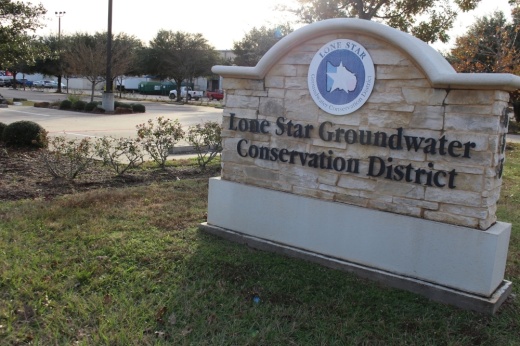LSGCD objects to the current proposed goal—known as desired future conditions, or DFCs–which was adopted by Groundwater Management Area 14 in April. GMA 14 includes several local groundwater conservation districts, including LSGCD, that regulate the Gulf Coast Aquifer System.
The proposed DFCs statement restricts districts within GMA 14 to no less than 70% median available drawdown remaining in the aquifer system in 2080 and no more than 1 additional foot of average subsidence between 2009 and 2080. Subsidence refers to the gradual sinking of the earth that can be due to excessive groundwater withdrawals.
A final DFCs statement will need to be approved by Jan. 5.
LSGCD is proposing to adopt a resolution supporting a DFC with the 70% drawdown metric but without the subsidence metric, claiming this metric cannot be accurately calculated with existing equipment and restricts entities within GMA 14 from making decisions best suited to their individual needs.
“We take no issue with the first DFC; it’s something we can measure; it’s an aquifer condition, and we believe it protects groundwater usage,” LSGCD President Harry Hardman said at a June 23 Conroe City Council meeting. “We do, however, take big issue with the second DFC.”
During the April GMA 14 meeting, LSGCD was the sole entity opposed to this metric. Now, LSGCD is seeking support from local entities ahead of the Jan. 5 adoption, although ultimately only entities within GMA 14 will be able to vote on the final DFC.
On May 25, Hardman asked county commissioners to adopt a resolution rejecting the subsidence metric from aquifer goals. And on June 23, Hardman approached Conroe City Council to consider the same request.
“One of our goals is ... to educate the public overall on how we are using science to protect your water, your property rights and your freedom of choice,” he said. “We are using science to protect your rights by advocating against some of these arbitrary metrics in the proposed DFCs.”
DFCs are required to be developed every five years. Hardman reminded council that in 2016, the city of Conroe successfully petitioned LSGCD’s DFC; at the time, LSGCD’s board was an appointed board, not an elected board. Subsidence was not an issue in the last DFC, and Hardman alleged the current proposed DFC violates the agreed resolution from 2016.
Hardman also said a one-size-fits-all approach does not work when measuring subsidence as different amounts of pumping in different parts of the county can affect ground levels differently. For instance, most of the county’s subsidence is occurring in south Montgomery County, which could be a result of pumping from Harris County, he said.
Additionally, most of the county’s subsidence-measuring devices are located in southern Montgomery County, making it hard to accurately measure the 1-foot average subsidence, Hardman said.
“If this DFC is implemented, our average would not be an actual average of the entire county but instead would be artificially skewed higher than the accurate measurements because of where all the monitoring stations are forcing higher areas like Conroe to adopt stringent new water restrictions, which aren’t necessarily needed,” he said.
LSGCD is working on a subsidence study that is focused solely on Montgomery County. The district has approved Phase 2, according to a June 15 news release from LSGCD. During Phase 1 of the study, consultants compiled a database of past subsidence studies, assessed historical models and prioritized additional work on the issue.
The second phase, which is expected to be completed in 2022, will build on the initial phase by developing a long-term plan for data collection and evaluation to help policymakers understand the effects of groundwater pumping on subsidence in the county, according to the news release. Future phases of the study include site-specific investigations and field work such as core sampling to better understand the aquifers in Montgomery County.
However, the study will not be complete before the final DFC will need to be adopted in January.
“Moving ahead with this policy before the research is complete is irresponsible to taxpayers. We should be making policy based on research, not the other way around,” Hardman said.
Meanwhile, many residents and stakeholders, particularly in The Woodlands, have pleaded with LSGCD to keep a subsidence metric in its DFC. Residents have cited property damage from shifting ground levels, and data from the Harris-Galveston Subsidence District shows subsidence is occurring across the county at various rates.





